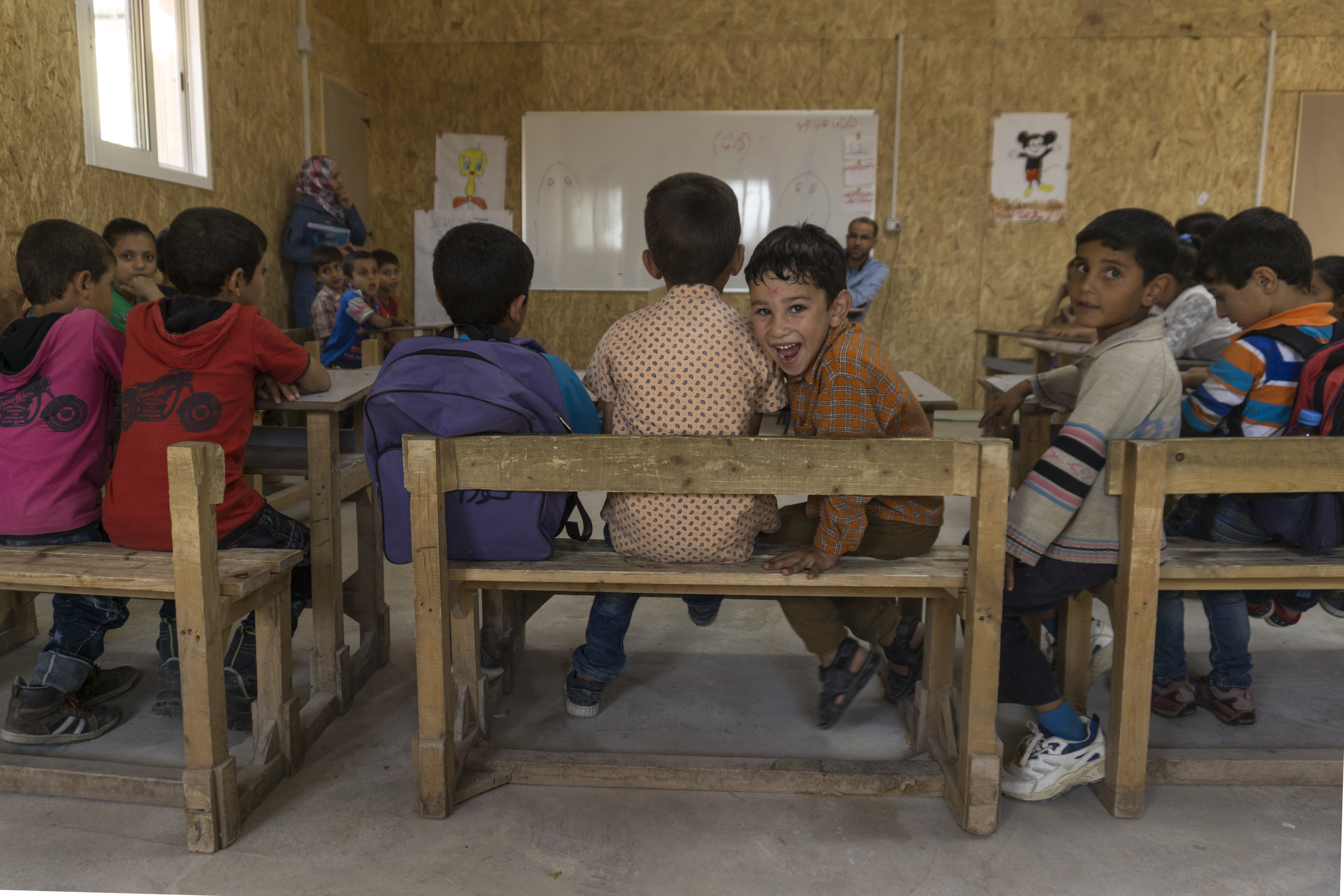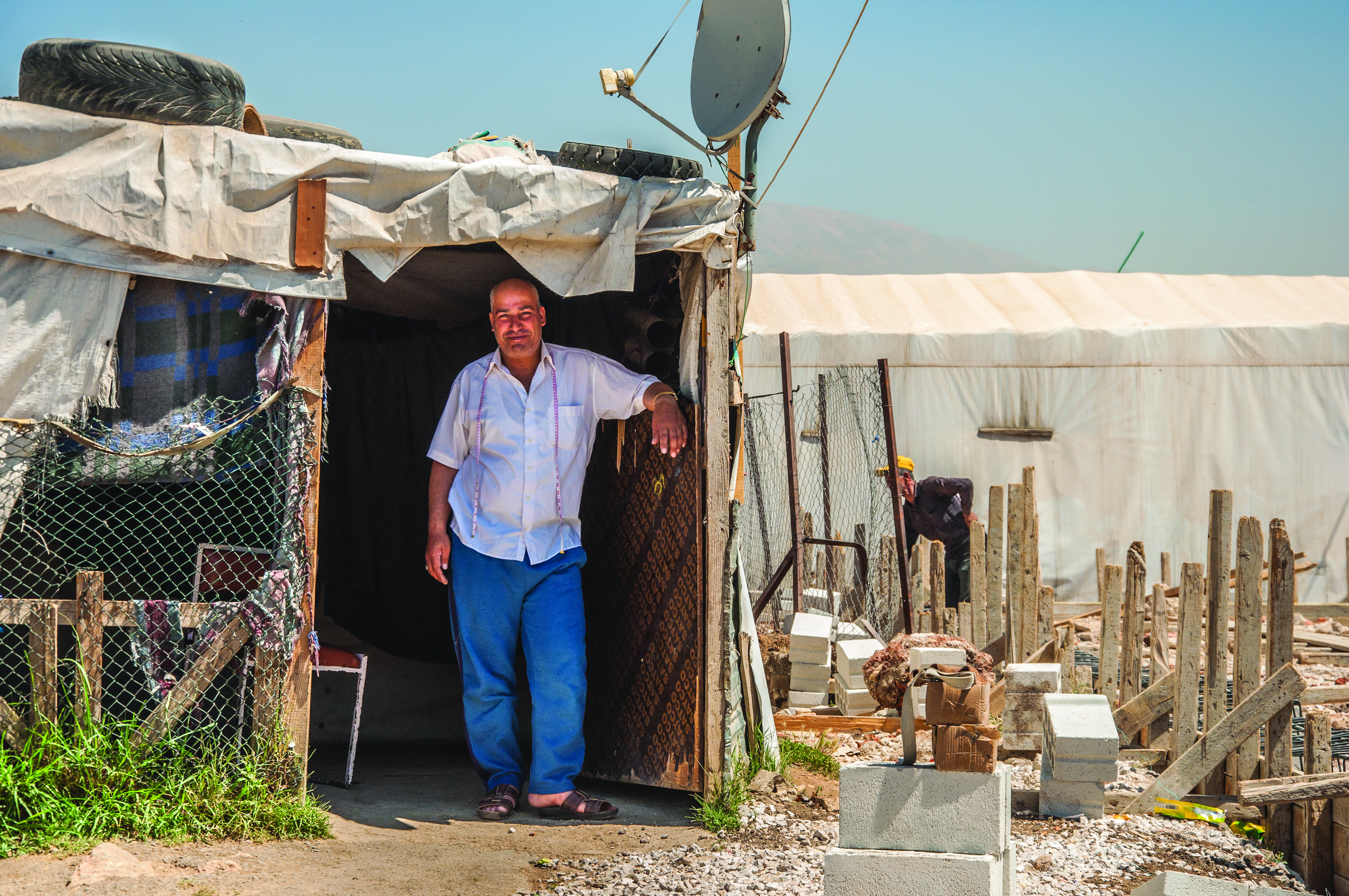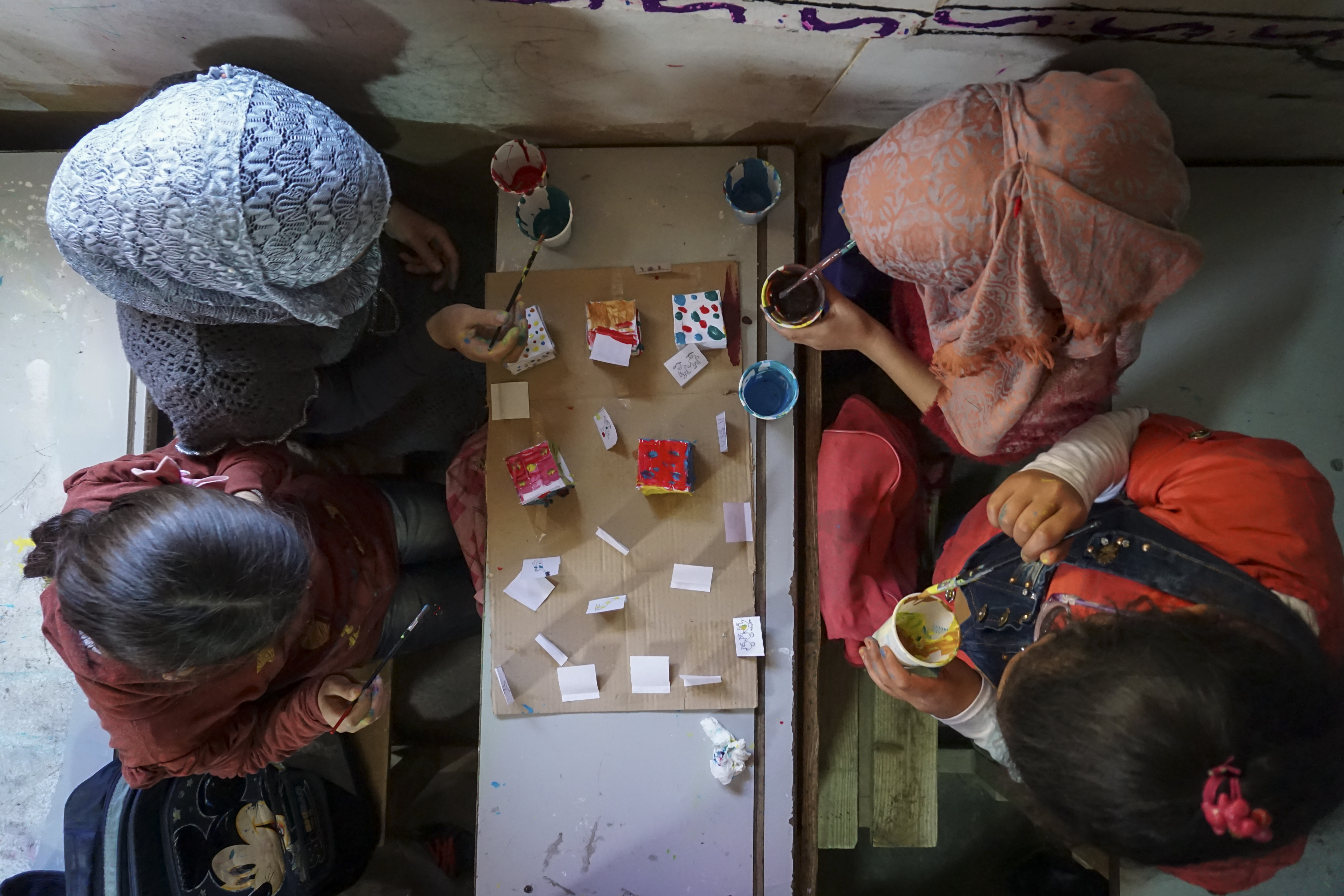In 2014, three years into the Syrian conflict, relief organizations Jusoor and Sawa for Development and Aid built a small school in Jarahieh – a crowded, informal refugee settlement in Lebanon’s Bekaa Valley.
Hundreds of Syrian boys and girls between the ages of five and 14 years old learned to write and count in the makeshift facility, which consisted of several tents made out of wooden structures covered with fabric.
At the start of this school year, students gathered in a new, weatherproof building. The London-based not-for-profit design studio CatalyticAction used the materials from a pavilion that had been used by Save the Children Italy at the 2015 Milan Expo to help the community build a warm, safe learning environment.
In the past five years, 1.1 million Syrian refugees have arrived in Lebanon, around half of them children. The scale of the humanitarian crisis has strained Lebanon’s public services and infrastructure, leaving the small country unable to provide an education for 250,000 refugee children. Humanitarian organizations large and small, including Jusoor, Sawa and CatalyticAction, have worked to fill some of the gaps.
CatalyticAction focuses on developing play and education spaces for refugee children, believing that their well-being and education are crucial for the community’s future. In addition to the Jarahieh school, the studio has worked on playgrounds for refugee children in Jeb Janine and Bar Elias, also in Lebanon, recreational spaces for migrants and refugees on the Greek island of Lesbos and urban agriculture initiatives in Nairobi’s Mathare slum.
Refugees Deeply spoke with Riccardo Luca Conti, CatalyticAction’s executive director, about his work, the company’s community-driven approach and the challenges that the humanitarian system faces today.
Refugees Deeply: Wars and persecution have driven more people from their homes than at any time since World War II. How can design make a difference in the lives of displaced people?
Riccardo Luca Conti: When we talk about people being displaced from one place to another we are in fact talking about new “places” and “spaces.” Every single person relates to the built environment and to designed elements every day. That’s why it is very important that people who are being displaced are not simply thrown in a “place” with no identity, but rather a place that can offer a sense of home, a sense of belonging.
This is the role that design has in relation to displacement, enabling dynamics and spaces that can generate a new sense of belonging for those people who are being displaced. Communal spaces, such as schools, often are a good initial step to create these dynamics.

Syrian children attend class in Jarahieh. (CatalyticAction)
Refugees Deeply: CatalyticAction specifically focuses on designing education and recreation facilities. Why are those areas particularly important?
Conti: Education is fundamental for the development of individuals and therefore for the development of a society as a whole. In the context of displaced populations, education becomes really important because schools and community centers, for example, are not only places where children can learn math, science and so on. They are also places where children can heal from the trauma of displacement and war, such as with the case of Syria.
It is very important to us that the children who will form the new generation of youth in Syria, after the conflict ends, will be able to rebuild their own country. This is why we focus so much on education, and we believe it is a worthwhile investment for the future of all the children we are working with.

A resident of the Jarahieh settlement in Lebanon. (CatalyticAction)
Refugees Deeply: You’ve worked with refugee communities in Africa and the Middle East. What have those experiences taught you about what refugees need to be able to sustain themselves?
Conti: We have learned that education is the most sustainable strategy for allowing people to be able to be active agents of their own development. Or we can put it in another way: knowledge sharing. We have learned that only through a genuine process of knowledge sharing is it possible to actually enable the people we are working with, to improve their lives.
In our work, this process takes different shapes throughout the methods we use in each project. For example, participation is a key element in our work and it is through different stages of participatory processes that we are able to transfer knowledge and skills to the people working with us (mostly refugees living in the places where we work), children, elderly, other organizations’ representatives, volunteers and so on.

Syrian girls paint in Jarahieh. (CatalyticAction)
Refugees Deeply: Through your projects, you’ve worked with aid organizations big and small. What are some of the main challenges the humanitarian system is facing today when it comes to responding to the needs of refugees?
Conti: The main challenge in the humanitarian system today is deeply understanding what is happening at the small scale. For example, I often see the personal component (one-to-one relationships) being excluded from “traditional” aid operations.
In our experience, to genuinely receive the respect of the people you are working with, refugees or not, it is fundamental to share moments of life together. We often achieve that through the construction phases of our projects, when we are 12 hours a day on site with the community, sharing not only work but also everyday life activities (meals, life stories, playing games, weddings and so on.) At the same time, we are aware of the fact that this is a challenge for many big organizations, as their target is to provide aid to as many people as possible.
I believe that both approaches are needed to cover the needs of disadvantaged populations, but perhaps what is missing is a stronger and wider collaboration between big organizations and smaller organizations that often have the capacity to be in closer contact with the community. If we are able to genuinely create this synergy at some point, the quality of the humanitarian system will improve drastically.
